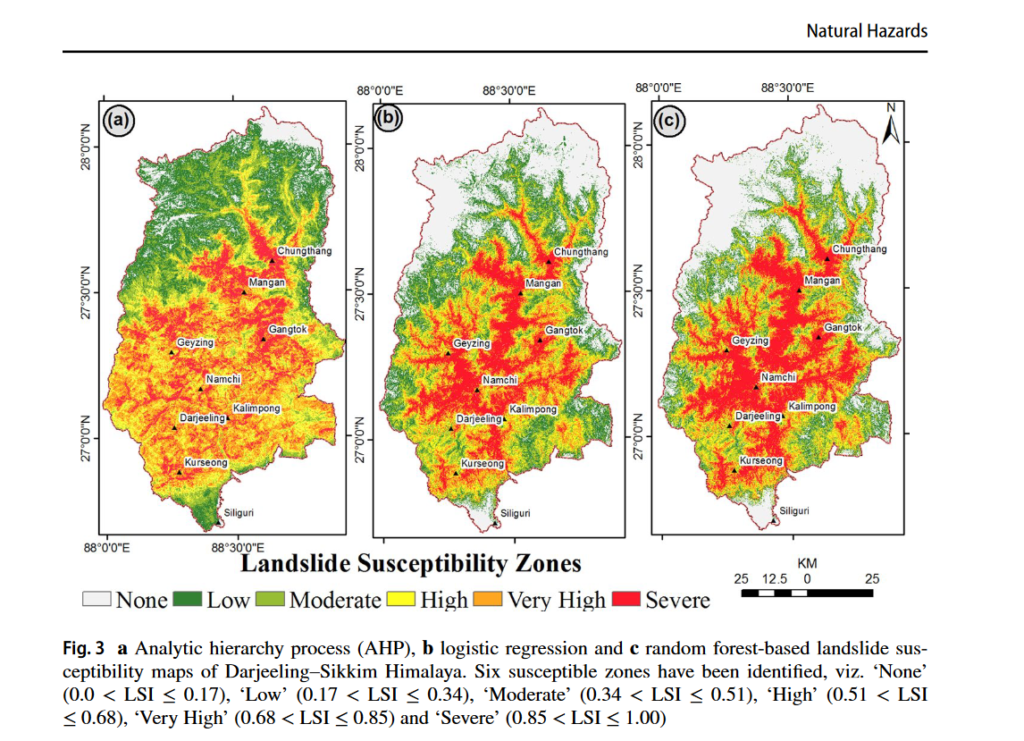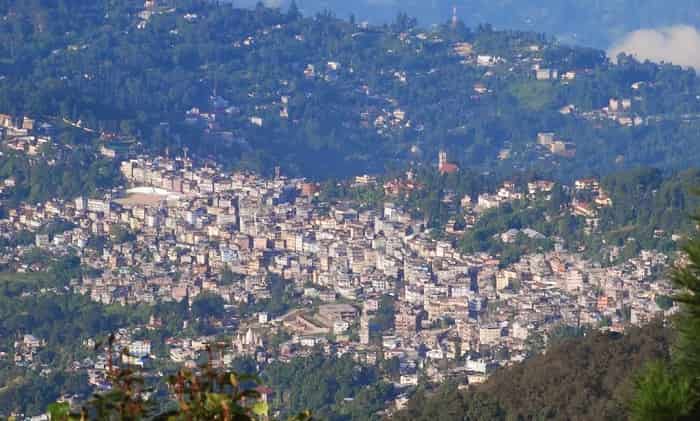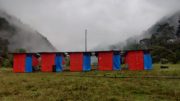Earthquakes, following the flash flood in Teesta, is another major cause of concern. Sandip C Jain deconstructs why we need to be better prepared
Kalimpong sits comfortably on the Himalayan Belt, one of the most earthquake prone areas in the world. As there hasn’t been a major earthquake exceeding M8 in the last fifty years, the town has grown and expanded, seemingly oblivious to the dangers lurking underneath the surface. How many buildings have been built without proper procedures against earthquakes, how many people furnish their houses according to taste rather than safety, and how have you planned for the worst possible scenario?
History
There has been many references made to earthquakes, ever since the time of enlightenment of Buddha c. 558 BC, but like many earthquakes since then, they have been short and undisruptive passages in semireligious texts. These earthquakes lack indefinable data, so they cannot be fully confirmed. It was only at the beginning of the last century that the quakes that shook the land have been studied and categorized. Four great earthquakes of magnitudes exceeding M8 have been witnessed in 1897, 1905, 1934 and in 1950 that caused great destruction. For example the great Bihar earthquake of 1934 on the Richter scale measured a staggering M 8. 4 and caused the death of approximately 11 000 people in the area. Another ten earthquakes exceeding M 7. 5 have occurred in the Himalayan Belt in the past 100 years. In 1988 Darjeeling and Gangtok were badly damaged when an M 6. 7 earthquake hit and 23 years earlier an M 5. 9 shattered the same cities. Even though Kalimpong has been saved in the past years from major destruction, research shows that activity is not only concentrated on these areas, but vary with every earthquake with high and low patches of activity.
The world’s greatest topographic features, the Himalaya and the Tibetan plateau were born as a result of continent – continent collision of the Indian and the Eurasia plates. This continuing northward collision of the Indian plate with respect to the Eurasian landmass causes the intense seismicity that is found in the area and most of the tension in the Himalayan region is concentrated along the shallow north dipping planes. This indicates, according to specialists in the field, the underthrusting of the Indian plate beneath the Eurasian plate. This movement caused by the collision between the two continent plates is known as Himalayan Frontal Thrust (HFT).

Even with the reasons of earthquakes in the area known to specialists and with records of previous earthquakes to study, the prediction of earthquakes is a very unpredictable business. Due to lack of extensive research in the area, there is an enormous strain on estimating more precisely the reoccurrence intervals for a great earthquake and even the best minds in the business cannot produce anything concrete. The best estimates by various workers for great earthquakes on the basis of slip rate and palaeoseismology suggest reoccurrence interval ranging from 180 to 500 years. With such broad estimates, the people living in earthquake prone areas should become more aware and prepared.
Earthquakes
An earthquake is a phenomenon that results from and is powered by the sudden release of energy. The energy released produces four different seismic waves simultaneously and can be felt on the ground. The waves responsible for the shaking are P-waves (primary waves) and S-waves (secondary waves or shear waves). The other two types of surface waves are called Love-waves and Raleigh-waves. There are two classes of earthquake effects, described as direct and secondary effects. The direct effect is when the earth around the area where the earthquake happens is deformed, mostly through gaping cracks in the surface or sudden ground height alterations. But as many earthquakes never break the surface, the amount of damaged inflicted by direct effects is usually a disturbance to the eye, when viewing the damage rather than the in human life or the wallet.
A well-built house near the area of origin of the earthquake, called the seismogenic fault, can often escape major damage. Most of the damage inflicted by an earthquake is due to the secondary effects, which are not directly caused by fault movement, but which result from the spread of the seismic waves moving away from the seismogenic fault. These secondary effects are caused by the seismic waves moving through an area. When the seismic waves, mainly P-waves and S-waves, spread away from the seismogenic fault, they travel like ripples in a pond. The further you are from the centre of the earthquake, the weaker the waves become.
The secondary effects can cause seismic-shaking, landslides, liquefaction and can trigger aftershocks and new earthquakes. Seismic-shaking is the violent side-to-side shaking, which has the capability and power to topple and destroy houses. In the water-saturated and soft soil areas the shaking causes the sand grains to loose contact and friction with other grains. This phenomenon is called liquefaction and such ground has no strength and cannot bear any load. Landslides are commonly started when the soil layer on the side of a hill or a mountain liquefies during seismic shaking and flows down as a wall of mud. The power and destruction caused by these phenomenons depends on the strength of the tremor, the location and the depth in which it occurred.
Other factors that effect include; the distance away from the centre of the earthquake, the path the waves take, the types of soil the waves encounter and also the quality of the constructions it passes through. The time of day as well as the preparedness of the people can have a tremendous impact on the amount of destruction. If one should hit during the busiest time of day, while everyone is busy at work or out on the streets, the loss of human life is said to multiple.
The possible destruction of secondary waves
The powerful side-to-side shaking on construction caused by the seismic-shaking has a tendency to bend the right angles found in houses to other angles. This process is called shear, which sturdily built houses can withstand depending on the power and length of the violent shaking. Scientists found that triangular shapes are best suitable for withstanding the most shears, but unfortunately the Egyptian-style architecture has not become fashionable here in Kalimpong. Reinforced concrete that only has vertical steel rods, designed to withstand the weight of the structure when the weight is distributed evenly and straight down, does not hold up to powerful tremors of a long-lasting earthquake. Around the world in earthquake prone areas construction codes have been implemented to include much more steel that is wound around the vertical steel rods horizontally to keep the column from breaking apart during the violent side-to-side shaking. As more steel is required to build these stronger fortified concrete columns, it is much more expensive than columns with only vertical steel rods.
Another popular construction norm was to make a strengthened foundation for the construction and weaker steel rods on the upper levels, to keep the weight and the strain applied to the base at a minimum. This common practise proved to be fatal in strong tremors, as the upper levels did not withstand the pressure applied to them during an earthquake and crushed everything and everyone on the lower levels. The location of houses is as important as building a sturdy well thought-out house. In all earthquakes, the low-lying areas with soft, water-saturated soils experience by far the most damage. Building a house founded on water-saturated and soft soils will liquefy during a tremor causing houses to lean or topple totally.
Kalimpong
The Government of West Bengal has issued building codes that are monitored and implemented by the Municipal Office of Kalimpong. The rules state that the height of the buildings should not exceed 11. 5 m or four stories high. There are guidelines against building near the vicinity of jhoras. When planning to build a house here, one must follow protocol and present detailed plans to the Municipal Office, where the location and height of the future buildings must be described in detail. Once permission has been granted, the building process is monitored by the officials of the Municipal Office at regular intervals.
So accordingly, there should be no buildings built near jhoras, or exceeding 11. 5 m. But there are houses being built at this very moment, that exceeds the 11. 5 m height limit, on locations with heavy streams running through them weakening the foundations with every passing litre of water. These houses will fall like a house of cards, when or if a major earthquake strikes. One does not need extensive knowledge in building or a measuring device to notice that these sorts of houses are being built. Why are the rules being broken so shamelessly? One possible answer to this question could be that there is corruption among the links of command, which by any standards is nothing new or surprising. But there is another possible answer to this terrible question and that is that there is no-one who cares enough about the potential of building deathtraps, as the problem is out of sight, so then surely it is out of mind.
Darjeeling and Gangtok have suffered in the past from destruction due to earthquakes, they know what it is like to see the awesome power of Mother Nature at work, but Kalimpong so far has been spared the true horror of widespread destruction. Earthquake prevention, which should start from conscious citizens, to choosing the safest locations for housing and using the safest materials and abiding by the rules, is not by any means cheap. Everything costs money, lots and lots of money. So it is easier to turn the other cheek and pretend the problem is not there. When or if it happens, the powers at be can turn to the emergency plan and sort out the mess, accordingly and with the utmost professionalism. Except that Kalimpong does not have an emergency plan in the case of an earthquake.
Kalimpong is luckier than most towns, as there is the army barracks up on the hill and in case of an emergency like an earthquake, the army will spare no expense or effort to come to the aid of the people of Kalimpong. The army has been reliable and willing to help in the past, but what happens when the hill the barracks is situated on becomes one liquefied mass of mud, water, trees and equipment thundering down the mountain? They will be in as much need of assistance as everyone else. So to which organisation should the residents turn for help? The Red Cross? The United Nations?
Last year in October in the Kashmir region, the earthquake left in its wake a path of total destruction leaving nothing behind for the survivors to live on. The roads were washed away or blocked by landslides to prevent help from reaching the most badly effected areas until many days later. Even now, nearly a year later, the route is still difficult and the people are forced to live in tents even during the bitterly cold winter months and rebuilding has been painstakingly slow. Could that be the future of Kalimpong one day? Huddled in an old army tent in midwinter?
The future in our hands
What Kalimpong needs to do, is to address the lacking state of preparedness. This town has been lucky in the past, but one day that luck might run out, so the people should at least be prepared and have some idea what to do, where to go. Even if prevention is expensive and a long process to organise everything, it must be started. Houses should be built firmer and according to the regulations, or at least away from running water. But everything must start from the conscious citizen, to push for an emergency plan, to prepare oneself and one’s family by learning some basic recommendations on what to do when an earthquake does strike. That will perhaps spare a few more lives.






Be the first to comment on "EARTHQUAKES – Are we prepared ????"